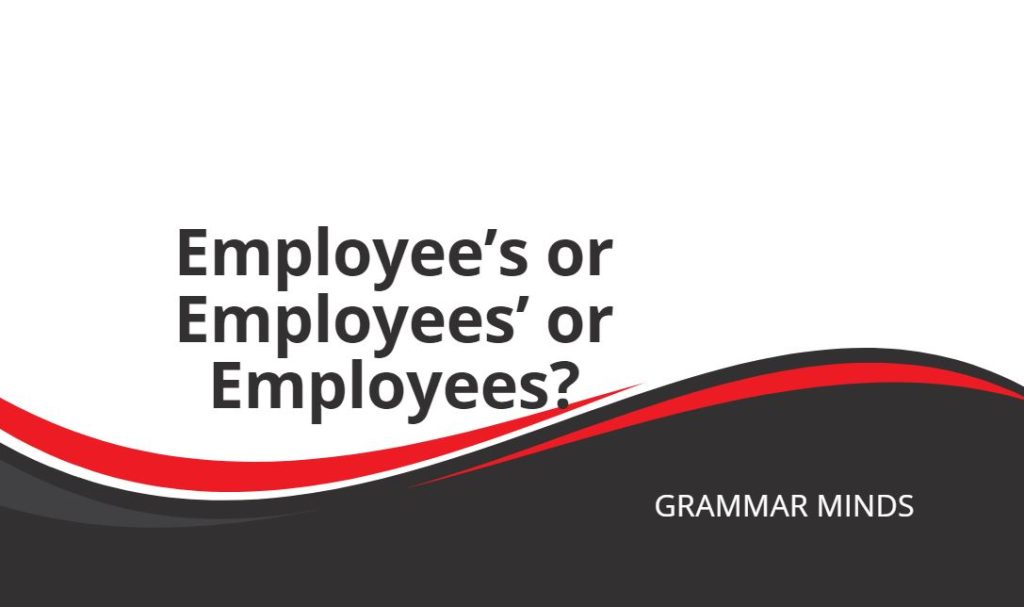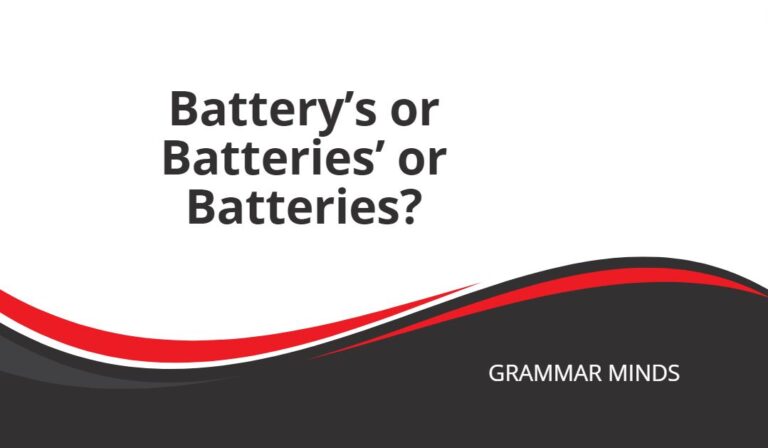The word employee’s is the singular possessive form of employee. E.g., “The employee’s badge was missing.” Furthermore, employees’ is the plural possessive form. E.g., “The employees’ lounge was renovated.” Also, employees is the standard plural of employee. E.g., “The employees attended the training session.”

The following chart provides a summary of the different forms of employee.
| Form | Example Sentence |
| Singular | Employee |
| Plural | Employees |
| Singular possessive | Employee’s |
| Plural possessive | Employees’ |
You can make the plural form by adding “s” to employee.
Furthermore, you can make the singular possessive by inserting an apostrophe and an “s” after employee. In comparison, the plural possessive is made by adding an apostrophe to the end of employees.
In the following examples, you can see the different forms of the word employee in context:
- Singular: The employee arrived early for the meeting.
- Plural: The employees participated in the workshop.
- Singular possessive: The employee’s desk was neatly organized.
- Plural possessive: The employees’ suggestions were taken into consideration.
The difference between the singular and plural possessives is that we are talking about one employee in the singular possessive sentence. However, in the plural possessive sentence, we are talking about something that belongs to multiple employees.
Now you have learned the basics of how to use the possessive forms of employee. However, you should keep reading so you can learn more about each form and how to use them.
Employee’s
The word employee’s is the singular possessive of the word employee. Therefore, you use it when you want to say that something belongs to one employee.
You can mention things that are a physical part of an employee or part of their belongings.
- The employee’s uniform was clean and pressed.
- Our employee’s performance has been exceptional this quarter.
Employees’
The word employees’ is the plural possessive of employee. Therefore, you use it when you want to indicate that something belongs to multiple employees.
The plural possessive can refer to physical objects owned by employees, as well as things like results or opinions.
- The employees’ cars were parked in the new garage.
- Somebody cleaned the employees’ workstations over the weekend.
Furthermore, the term employees’ can also refer to spaces explicitly designed for employees, as well as periods of time that employees spend without managers.
- The employees’ cafeteria offers a variety of meals.
- They organized an employees’ retreat to build team spirit.
Employees
The term employees is the standard plural of the word employee. Therefore, you use it when you want to talk about more than one employee in non-possessive sentences.
You can use the plural version to mention a specific number of employees.
- Twenty employees attended the seminar.
Also, you can use it to refer to all employees in a general sense.
- Employees are encouraged to share their ideas during meetings.







